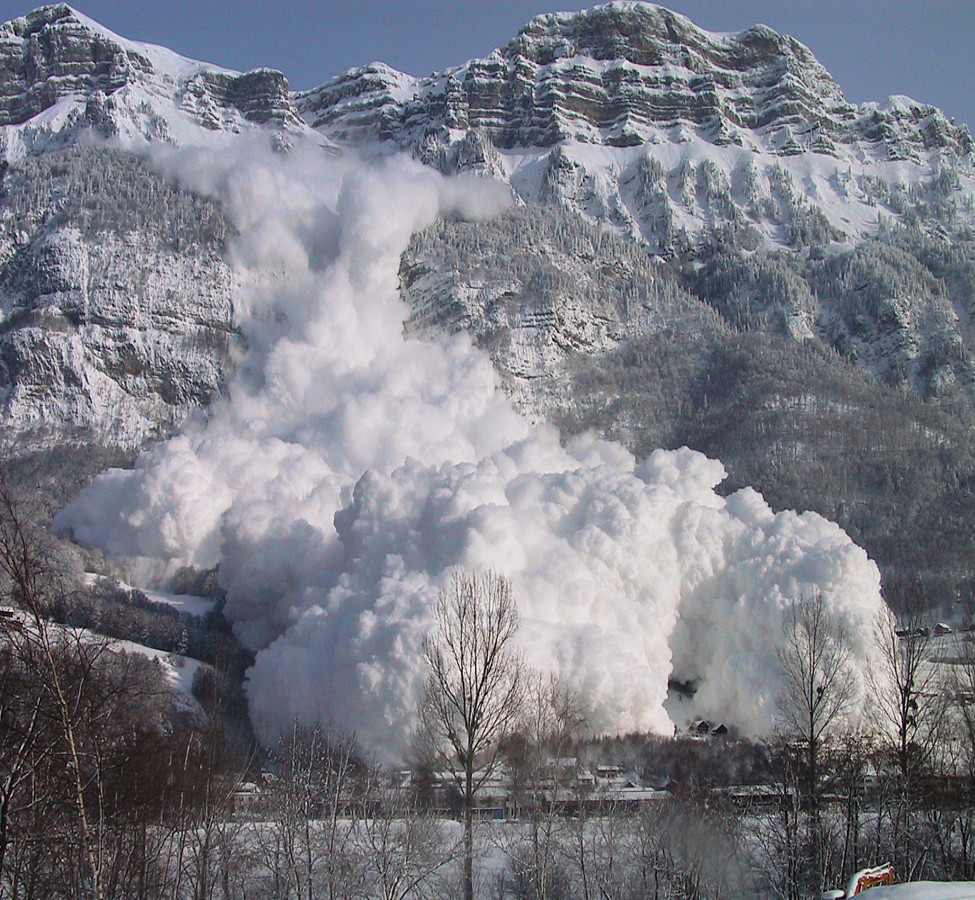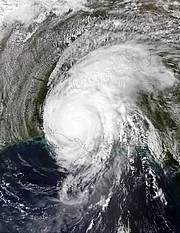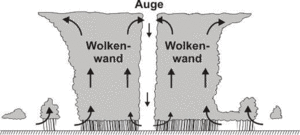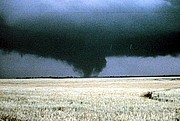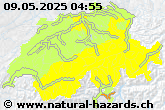Tropical storm
hurricane, typhoon, cyclone
A tropical storm (wind force more than 8) is a low-pressure system which developed over tropical or sub-tropical waters.
How does a tropical storm develop?
The development of a tropical storm requires very warm and humid air masses. Such storms originate over sea waters which have surface temperatures above 26°C (tropical and sub-tropical oceans only). The heated air masses expand, get lighter and, therefore, start to rise. Typical thunderstorm clouds are formed. Out of large thunderstorm systems (called mesoscale convective complexes) tropical storms are formed.
Constitution of a tropical storm
The clouds of a tropical storm twist around the «eye», a 20 to 60 km wide centre which is almost cloud- and wind-free. The eye is surrounded by the so-called «eyewall», a circular area with clouds up to 12 to 16 km altitude. The eyewall is the most active of zone with strongest winds at the bottom (more than 200 km/h) and highest precipitation intensities (more than 100 mm/h). A tropical depression has wind speed of 8 to 11 according to the Beaufort-Scale. Tropical storms with wind speed above 11 are called hurricane (Atlantic, North-East Pacific), typhoon (North-West Pacific) or cyclone (Indian Ocean, South Pacific).
Incidence
A tropical storm has a lifetime of several days. As soon as the storm falls on land or is over a cool sea current the input of warm and moist air masses is interrupted. In addition, the storm is slowed down on land due to friction. The depression weakens and finally disappears. Tropical storms occur normally in late summer, when the heating of the oceans is most dominant. On the northern hemisphere they occur in August and September, on the southern hemisphere in February and March.
Secondary effects
Tropical depressions have disastrous secondary effects: High rainfall intensities over large areas can trigger floods in large river basins. In addition, landslides often occur. Coastal areas or small islands are most endangered by tropical storms. Not only the high wind force is threatening those areas but the storm can trigger flooding and costal erosion through storm surge and wave action. Waves of up to 30 m can occur on the open sea depending on duration and intensity of the storm. Such waves are a threat to shipping and off-shore installations, like oil platforms.
